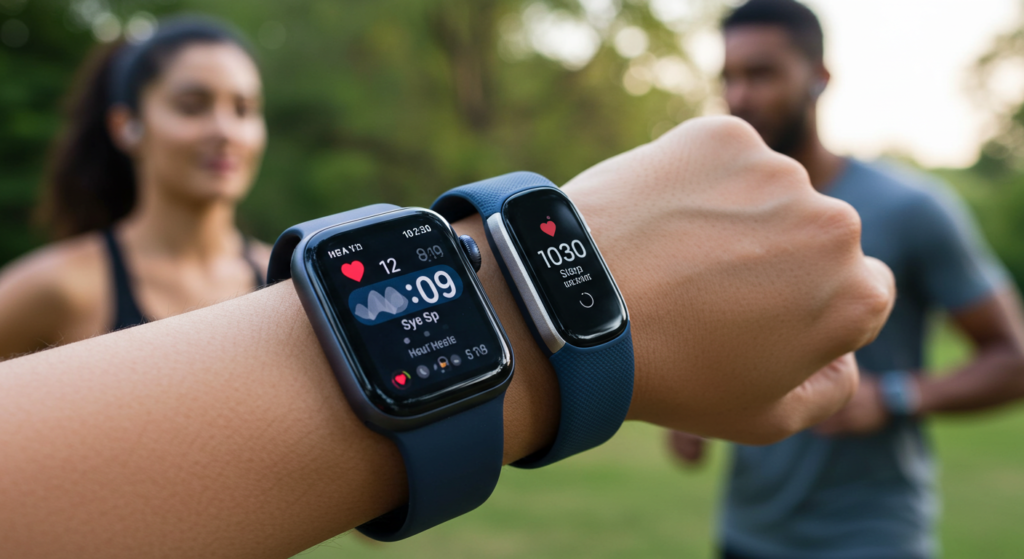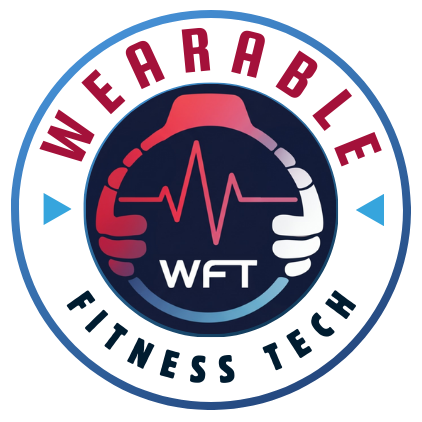
Wearable fitness trackers and smartwatches have become the tech accessories almost everyone talks about, and for good reason. These nifty devices are strapped onto your wrist, giving you a snapshot of your health and activity with just a glance. But what’s the story behind these gadgets, and why have they captured our fascination?
At their core, these devices fall into the broader category known as wearable technology. They’re electronic devices that you can wear as an accessory, usually on your wrist. Now, even though fitness trackers and smartwatches sit in the same family tree, there’s a bit of a sibling rivalry here. Fitness trackers are all about keeping an eye on your health stats, like your steps, heart rate, and sleep patterns. Smartwatches, on the other hand, tend to pack in those features too, but they also play nicely with your smartphone to give you notifications, apps, and even music control.
These gadgets didn’t just pop up out of nowhere. They have their roots back in the early days of digital watches and evolved over time. From simple pedometers to sophisticated heart rate monitors, their journey reflects our growing fascination with an active, connected lifestyle. In the ’90s and early 2000s, tech fans might remember clunky monitors that were a pain to wear but oh-so-coveted for the tech set.
Fast-forward to today, and wearable tech is everywhere. The market has seen a boom, with fitness culture and the modern-day hustle creating a space where keeping track of personal metrics isn’t just handy—it’s almost essential. Whether it’s counting steps, logging your runs, or simply keeping tabs on how many hours you sleep, being more aware of daily habits is part of this tech’s charm. And let’s be real, sporting a cool, sleek gadget on your wrist doesn’t hurt the style factor either.
Features and Functionalities That Set Wearables Apart
These little gadgets are packed with features that might make James Bond do a double-take. What’s essential, though, is knowing what each feature does and how it fits into your lifestyle.
First up, we’ve got the basics: heart rate monitoring, step counting, and sleep analysis. Devices track your heartbeat throughout the day, letting you know when you might need to take it easy or step up the pace. Steps are almost like the currency of fitness trackers, giving you daily and weekly targets to hit. Sleep analysis gives insights into how well you’re catching those Zs, a crucial aspect of overall health.
Beyond the basics, there are some advanced toys in the toolbox. These include features like VO2 max, which estimates the maximum oxygen you can use during intense exercise, and ECG monitoring, which checks your heart’s rhythm for any irregularities. Some devices even monitor blood oxygen levels, keeping tabs on how well your body distributes oxygen to your muscles and organs.
Then there’s the seamless integration with other devices. You can sync your tracker with a smartphone to keep all your data in one handy location. This integration allows you to track progress over time, set and review goals, and stay connected.
And of course, there’s the convenience of getting notifications right on your wrist. Whether it’s texts from friends, calendar reminders, or social media updates, staying in the loop without digging into your pockets is a massive perk. This ability to customize alerts helps you stay on top of your game by filtering what you actually want to see.
With all these features wrapped around your wrist, wearables have shifted from being novelty gadgets to essential smart devices that enhance both our health routines and daily communication. Whether you’re a marathoner or someone trying to squeeze some more steps into your day, leaning into these tools can provide clarity and convenience right where you need it.
Benefits for Health, Fitness, and Daily Life
Wearables aren’t just about crunching numbers; they’re about transforming lives. One of the standout benefits is how they encourage physical activity. Whether it’s nudging you to stand up, reminding you to hydrate, or rewarding you for hitting your daily step goal, these devices keep you moving toward a healthier lifestyle.
Sleep insights can literally make or break your day. By tracking your sleep stages, your wearable can suggest when you should hit the hay and when to rise, helping you maximize your rest and minimize those groggy mornings. Better sleep means better energy, focus, and mood, which is something anyone could use.
Let’s talk stress management. Some wearables come with stress tracking, gauging how you’re handling life’s pressures through heart rate and breathing patterns. Add in breathing exercises and guided meditations, and you’ve got a personal relaxation coach on your wrist.
Taking calls, responding to messages, or checking notifications without fishing for your phone saves time and keeps you hands-free and focused. In a world where multitasking is a way of life, these bits of convenience really add up.
Finally, there’s the motivation factor. By setting personal goals and seeing your progress in real-time, you’re more likely to stick with your fitness or health improvement plan. Little achievements can build up your confidence, making every move towards a goal a bit more exciting.
Potential Drawbacks and Challenges
While wearable tech brings a lot to the table, it’s not all smooth sailing. Privacy concerns are high on the list. With so much personal data at stake, like health metrics and location tracking, there’s a risk of this information being misused or shared without consent. It’s super important to dig into privacy policies and understand what data is being collected and how it’s being used.
Then there’s the never-ending battle with battery life. While some devices can last a week on a single charge, others might only get you through a couple of days. This is something to think about if you’re constantly on the move or simply don’t want another gadget to plug in every night.
Durability is another piece of the puzzle. Whether you’re hitting the gym, running trails, or swimming, you need a device that’s built to withstand the pace. Not all wearables are created equal here, so checking out water resistance and sturdiness is key.
Another thing to watch out for is becoming too reliant on technology. It’s easy to fall into a pattern of believing every stat your wearable throws at you. While these devices provide loads of useful information, they’re not infallible. There can be discrepancies in step counts, heart rate readings, or sleep tracking, so take those metrics with a pinch of salt and maybe cross-reference with how you’re physically feeling each day.
Future Trends and the Evolution of Wearable Tech
Wearable tech is showing no signs of slowing down. Emerging technologies keep pushing the envelope with features we couldn’t have imagined just a few years back. We’re talking about augmented reality becoming part of daily life, or even wearables that could diagnose medical conditions.
Integration with healthcare systems is a booming area. With wearables gathering personal health data in real time, the potential to transform medical diagnostics and patient monitoring is massive. Imagine a doctor adjusting your treatment based on your latest heart activity data recorded by your smartwatch.
Personalization is another big trend. Smartwatches and fitness trackers are tailoring experiences using AI, learning your habits, preferences, and needs. This results in smart recommendations, like the perfect time for a run or insightful tips on improving sleep hygiene.
The world of fashion and design is also getting in on the act. Tech companies are working with fashion brands to create devices that don’t just perform well but look great too. From customizable watch faces to interchangeable bands, making a style statement with tech has never been easier.
Looking ahead, wearables will likely become more ingrained into our everyday lives, boasting smaller profiles, longer battery life, and even more intimate interaction with our daily habits and health needs. Embracing these innovations means more than just tracking—it means shaping the way we live day by day.
Final Thoughts
In conclusion, wearable fitness trackers and smartwatches have rapidly evolved from simple pedometers to sophisticated health and communication tools, seamlessly integrating into our daily lives. Their ability to monitor vital health metrics, encourage physical activity, improve sleep quality, and manage stress, alongside convenient communication features, makes them invaluable for many. However, potential drawbacks such as privacy concerns, battery life limitations, and the risk of over-reliance on technology must be considered.
Despite these challenges, the future of wearable technology appears bright, with ongoing innovations promising even greater personalization, integration with healthcare systems, and stylish designs, ensuring wearables will continue to play an increasingly significant role in enhancing both our health and daily routines.
